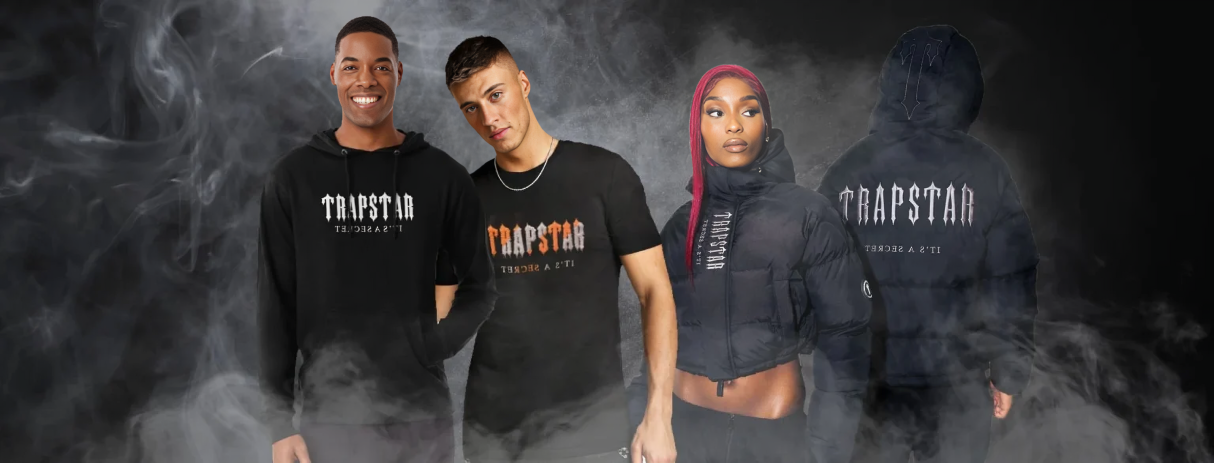In the cadenced heart of urban culture, where spray painting whispers stories on weathered dividers and tennis shoes slap the cobblestones of a bustling city, a title echoes louder than most: Trapstar. Initially born in the dynamic boulevards of London, Trapstar’s impact has spilled distant past its UK roots, leaking into the smart veins of Poland. Nowadays, it isn’t fair a brand; it’s a lifestyle—a disobedience hung in strings of unashamed confidence.
Trapstar: The Birth of a Movement
Trapstar developed from the dirty corners of streetwear culture, created by creatives who looked for to mix craftsmanship, music, and the crude vitality of urban life into wearable explanations. It wasn’t fair almost clothing; it was around character. Each piece bore the weight of a message—a quiet thunder against conformity.
When Trapstar entered Poland, it found a related soul. Poland, with its wealthy social embroidered artwork and its youth hungry for expression, grasped the brand wholeheartedly. The roads of Warsaw, Kraków, and Gdańsk before long bore witness to this striking tasteful: hoodies stamped with enigmatic typography, coats that appeared to tell insider facts as it were the wearer knew, and pieces that obscured the lines between mold and rebellion.
Why Poland Fell in Cherish with Trapstar
The Clean streetwear scene has continuously been a reflection of the country’s double personality: its deep-rooted history and its dynamic, future-facing vitality. Trapstar felt like an expansion of this ethos—a bridge between old-world flexibility and new-age audacity.
Authenticity: In a world where mold can feel mass-produced, Trapstar’s unmistakable plans reverberate with Poland’s youth. The brand feels individual, as in spite of the fact that it’s telling the wearer’s story.
Exclusivity: Trapstar’s drops are uncommon diamonds. The shortage fills want, and in Poland, where independence is celebrated, owning a piece of Trapstar feels like being portion of a mystery club.
Cultural Match up: Poland’s developing music and road craftsmanship scenes reflect the defiant vitality of Trapstar. Neighborhood craftsmen and influencers frequently match the brand with their inventive interests, increasing its appeal.
Trapstar as a Shape of Expression
Poland’s adore undertaking with Trapstar isn’t fair approximately aesthetics—it’s almost rebellion. The brand’s tense visuals and strong articulations adjust with a era challenging standards and revamping stories. Trapstar offers more than clothing; it’s a wearable declaration of self-expression.
From curiously large plane coats to realistic tees shouting urban verse, each piece gets to be a canvas. On the roads of Łódź or the underground clubs of Poznań, Trapstar is more than visible—it’s lively, moving with the beat of the individuals who wear it.
Trapstar: The Future in Poland
As Poland’s design environment proceeds to develop, Trapstar is carving a specialty that goes past clothing racks. Collaborations with neighborhood craftsmen, pop-up occasions, and limited-edition discharges have developed its roots in the Clean showcase. It’s a brand not substance with standing still; it advances, fair like its wearers.
The following chapter in this adventure might include seeing Trapstar on the stages of Poland’s music celebrations or encourage grasped in its dynamic skateboarding culture. But one thing is certain—Trapstar isn’t fair a brand in Poland; it’s a explanation, a story, and a movement.
Conclusion
In the conclusion, Trapstar speaks to something Poland’s youth have continuously esteemed: opportunity. The opportunity to wear your truth, to claim your singularity, and to walk the roads knowing the world is observing.
